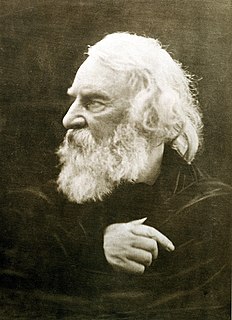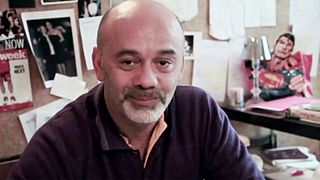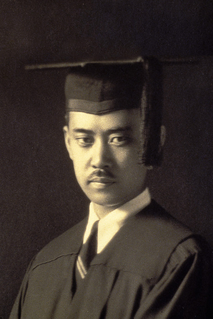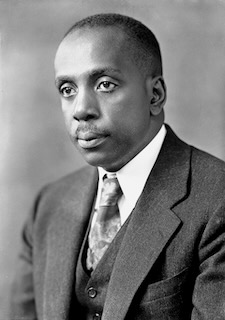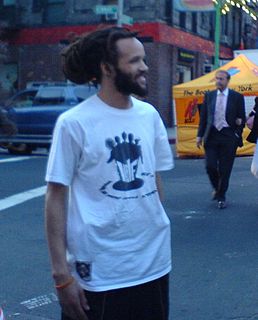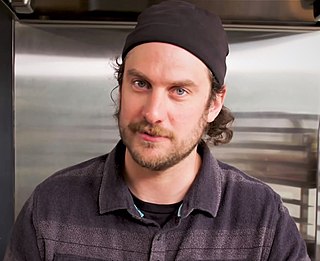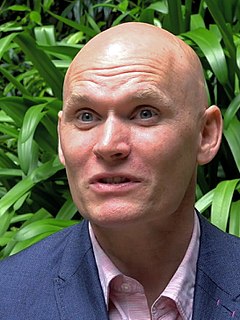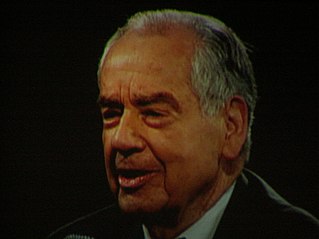A Quote by Terry Pratchett
Writing, for me, is a little like wood carving. You find the lump of tree (the big central theme that gets you started), and you start cutting the shape that you think you want it to be. But you find, if you do it right, that the wood has a grain of its own (characters develop and present new insights, concentrated thinking about the story opens new avenues). If you're sensible, you work with the grain and, if you come across a knot hole, you incorporate that into the design. This is not the same as 'making it up as you go along'; it's a very careful process of control.
Quote Topics
About
Across
Along
Avenues
Big
Careful
Carving
Central
Characters
Come
Concentrated
Control
Cutting
Design
Develop
Find
Gets
Go
Grain
Hole
Incorporate
Insights
Knot
Like
Little
Lump
Making
Me
New
Opens
Own
Present
Process
Right
Same
Sensible
Shape
Start
Started
Story
Theme
Think
Thinking
Tree
Up
Very
Want
Wood
Work
Writing
Related Quotes
When people say "How do you write a book, how does it all happen?" I say, you line things up, and you line them up as actually as you possibly can, but sooner or later the book has got momentum and it's moving along under that momentum. It's like a sculpture, if you're working with the grain of the wood, the wood will start defining what shape it's going to become.
You didn't plan to write a story; it just happened. Well, it could be argued that the next thing you should do is find a hole to dig. Right? So you start digging a hole and then somebody brings a body along and puts it in. That's what a story must feel like to me. It's not that you say, "I want to write a story about a gravedigger." But you're walking along and "I don't know what I'm doing here in this story,' and - boop! a shovel. "Oh, interesting. Ok, what does one do with a shovel? Digs a hole. Why? I don't know yet. Dig the hole! Oh, look a body."
People come, people go – they’ll drift in and out of your life, almost like characters in a favorite book. When you finally close the cover, the characters have told their story and you start up again with another book, complete with new characters and adventures. Then you find yourself focusing on the new ones, not the ones from the past.
There must be a union between the spirit in wood and the spirit in man. The grain of the wood must relate closely to its function. The abutment of the edge of one board to an adjoining board can mean the success or failure of a piece. () Gradually a form evolves, much as nature produces the tree in the first place. The object created can live forever. The tree lives on in its new form. The object cannot follow a transitory “style”, here for a moment, discarded the next. Its appeal must be universal. Cordial and receptive, it should invite a meeting with man
I love playing different characters. I just do. I want to play even more quirky and interesting characters and just something that people wouldn't automatically think that I would be. I want to go against the grain a bit and I'm hoping people will be open-minded enough to cast me in stuff that's going against the grain.
If you get the characters right you've done sometimes nearly half the work. I sometimes find I get the characters right then the characters will often help me write the book - not what they look like that's not very important - what people look like is not about their character. You have to describe the shape they leave in the world, how they react to things, what effect they have on people and you do that by telling their story.
In my students, I'm always dispelling the notion that characters come like a light bulb over the head in cartoons. For me, it's like a shapeless big lump of clay. You just build it into something, and then you step back and go, 'That's not right,' hack it apart, put out a new arm, and say, 'Maybe this will walk around and work.'

